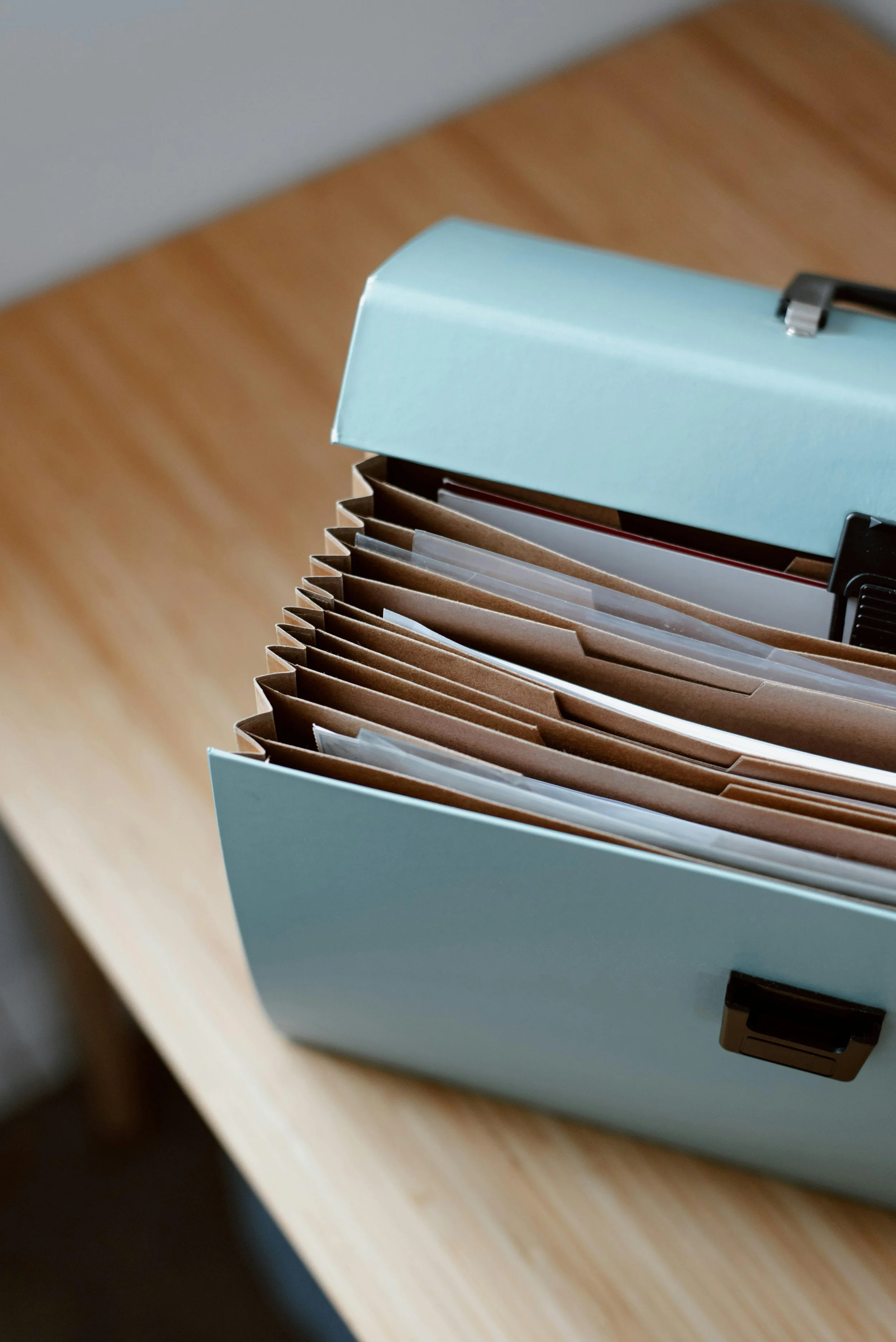Top secrets for going paperless in 2026
Imagine this: it’s a new year, you open your laptop, and in just a few clicks, you find every document you need — tax files, school forms, receipts, warranties — all perfectly organized, labeled, and at your fingertips. No stacks of paper. No rummaging through drawers. No guilt about “that pile” that’s been sitting on the counter since last spring.
Sounds dreamy, right?
Well, 2026 is the perfect year to finally make that dream a reality. With so many user-friendly apps, cloud services, and organizational tools available, going paperless has never been easier — or more satisfying.
If you’ve been telling yourself you’ll “get around to it,” this guide is your nudge. Whether you’re starting from scratch or just need to fine-tune your system, these top secrets for going paperless will help you create digital order, reduce clutter, and reclaim your peace of mind — one file at a time.
Why go paperless?
Before diving into the “how,” let’s talk about why this matters.
Paper clutter is sneaky. It builds slowly — a bill here, a receipt there, a child’s school notice, a medical form, a warranty you might need “one day.” Before you know it, your workspace, kitchen counters, and filing cabinets are overflowing.
Going paperless doesn’t just save space — it transforms how you live and work.
Here’s what happens when you go paperless:
You save time searching for documents
Your home looks and feels more peaceful
You reduce the risk of losing important information
You can access what you need anytime, anywhere
You minimize environmental waste (a big bonus!)
And most importantly: it gives you mental clarity. When you know where everything lives — and it’s not stacked in piles — you can focus your energy on what really matters.
When you work with our team, we can guide you to figure out what system works best; even figuring out where to put the papers that need to be digitally filed! It’s not just about physical clutter, but about digital clutter too. Check out our blog post about the benefits of decluttering for more information!
We also have found that having everything digital is essential when moving, especially in Hong Kong! Who wants to fumble around with stacks of papers looking for the electricity account number? Check out our Moving Guide in Hong Kong that includes a checklist for decluttering!
Step 1: Declutter the paper you already have
Before you can build your dream digital system, you’ll need to deal with the paper currently living in your home. This is the “hard reset” phase — but it’s also deeply satisfying once you see those clear surfaces emerge.
How to start
Gather it all. Collect every piece of paper from desks, drawers, shelves and baskets. Don’t forget purses, backpacks or that one kitchen counter corner
Sort by category. Create broad piles like:
Financial (bills, bank statements, tax documents)
Home (warranties, manuals, insurance)
Medical (records, prescriptions)
Kids/school
Toss what you don’t need
Shred anything outdated or no longer relevant
Recycle old flyers, expired coupons or unnecessary duplicates
Keep only what’s absolutely necessary for records, legal or sentimental reasons
Digitize as you go. Use a scanning app to create PDFs. These apps auto-crop, enhance clarity and even make text searchable (so you can later find “receipt” or “warranty” with a quick keyword search)
Pro Tip: Set up your phone or tablet near your sorting space so you can scan and recycle simultaneously — no double work.
Step 2: Create a simple, intuitive digital filing system
Your digital system should mirror how your mind naturally works. Overcomplicating it is the fastest way to lose momentum.
Think of this as creating the digital version of a tidy filing cabinet — one that’s clean, consistent, and accessible. With our Done-for-you home organization service, we can set this up with you while going through all your paperwork so that it works for you!
The folder framework
Start with broad, top-level folders that make sense for your life. For example:
Documents
├── Finances
│ ├── Banking
│ ├── Taxes
│ ├── Bills
├── Home
│ ├── Utilities
│ ├── Insurance
│ ├── Maintenance
├── Family
│ ├── Medical
│ ├── School
│ ├── Travel
├── Work
│ ├── Contracts
│ ├── Projects
│ ├── Certificates
└── Personal
├── IDs
├── Memberships
└── Receipts
Once this skeleton is in place, you can add more subfolders as needed — but don’t go too deep. The goal is quick retrieval, not digital labyrinths.
Naming conventions matter
When saving files, use a consistent naming format like:
2025-12-15_HSBC_Bill.pdf
2025_Medical_Receipt_Dental.pdf
2026_Tax_Return.pdf
Why it works:
Files automatically sort chronologically.
You can search easily by keyword.
You avoid vague names like “scan0001.pdf” (a digital nightmare).
Pro Tip: Start all file names with the date (YYYY-MM-DD format) for easy sorting and tracking.
Step 3: Choose the right digital tools
The beauty of going paperless in 2026 is that you have options, lots of them. From apps to cloud storage to automation, the right tools can make your system effortless to maintain.
Cloud storage platforms
Choose one primary home for your files. Great options include:
Google Drive: Integrates with Google Workspace, perfect for families and professionals.
Dropbox: Reliable and intuitive for shared files.
iCloud Drive: Seamless for Apple users.
OneDrive: Best for Microsoft 365 users.
All of these allow you to sync across devices, back up automatically, and share documents securely.
2. Scanning apps
As mentioned earlier, apps like Adobe Scan, Notebloc, or Genius Scan are your best friends. They instantly turn paper into searchable PDFs.
3. Password protection and security
Keep sensitive information secure using password-protected folders or encrypted apps like 1Password, NordLocker, or built-in encryption in your cloud service.
4. Note-taking and organization apps
If you prefer digital “binders” for organizing ideas and notes, try:
Evernote or Notion for journaling, project planning, or checklists
Apple Notes or Google Keep for quick scans and to-dos
Pro Tip: Don’t spread your files across too many platforms. Stick to one primary digital home — consistency makes your system sustainable.
Step 4: Create a routine that keeps you paperless
Going paperless isn’t a one-time event — it’s a lifestyle shift. The key is to create small, repeatable habits that prevent paper clutter from creeping back in.
Here’s how to make it easy to stick with:
1. Set up a “Digital Inbox”
Designate one folder on your desktop or phone for new scans and documents (e.g., “To File”). Once a week, move everything into its correct folder.
2. Scan immediately
Whenever you receive a receipt, school notice, or form, scan it right away — ideally within 24 hours. The faster you digitize, the less chance it ends up in a pile.
3. Go digital first
Whenever possible, opt for:
E-statements instead of printed bills
Digital receipts when shopping
Email confirmations instead of paper forms
This reduces incoming paper and saves you the work of scanning later.
4. Weekly or monthly file checks
Schedule 15 minutes each week (or an hour monthly) to review your folders. Delete duplicates, rename unclear files, and archive anything outdated.
Pro Tip: Use Sunday evenings or the first day of each month to do this — pair it with your calendar or finance check-in for efficiency.
Step 5: Digitize sentimental and reference items
Not everything paper-based is purely functional. Some items carry emotional value — children’s artwork, old letters, or family recipes. These deserve a thoughtful approach, not just a scan-and-toss mindset.
For kids’ art and school papers
Take photos or scans of the best pieces
Create annual digital albums using apps like Chatbooks or Shutterfly
Keep only a few originals — the truly special ones
We also like Milk Books that creates coffee table books with your favorites!
For cards and letters
Photograph both sides and store them in a “Memories” folder
Add file names like “2024_BirthdayCard_Grandma.pdf” for easy retrieval
For manuals and warranties
Most product manuals are available online — so keep only the ones with proof of purchase or serial numbers. Scan and recycle the rest.
Pro Tip: Create a folder titled “Home Reference” for all your appliance manuals, renovation details, and warranty PDFs. It’ll save you endless frustration later.
Step 6: Back it all up - automatically
Once your digital system is in place, the final (and most critical) step is protection.
1. Automated cloud backup
Most cloud services automatically back up your files, but double-check your settings. Confirm your folders are syncing properly across all devices.
2. External hard drive backup
Once a month, back up your most important files to an external drive. Label it clearly and store it in a safe place.
3. Version control
Services like Google Drive and Dropbox save older versions of documents. This means if something goes wrong, you can restore it easily.
Pro Tip: Set a recurring reminder every month to back up and review your files. It takes minutes and offers priceless peace of mind.
Step 7: Make it beautiful and enjoyable
Yes — your digital organization space can become your happy space too!
Consider:
Custom folder icons for aesthetics.
A minimalist desktop background that reflects calm and order.
Simple naming and color-coding systems that feel intuitive.
When your digital space looks and feels good, you’re naturally more inclined to maintain it.
Step 8: Celebrate your digital transformation
Once your system is up and running, take a moment to appreciate how far you’ve come. You’ve reclaimed time, space, and mental clarity.
Here’s the thing — going paperless isn’t just about files; it’s about freedom.
Freedom from clutter.
Freedom from wasted hours searching for documents.
Freedom to spend time on what truly matters.
And if you ever feel overwhelmed, remember that help is just a call away. Our Done-for-you home organization service is not just for closets; it is easily applied to all areas of your home, including the digital space.
At The Happy Space Co., we know that clutter — whether physical or digital — can quietly weigh you down. Our team helps families and professionals in Hong Kong create calm, functional systems that last. From paper-to-digital transformations to streamlined home and office organization, we’re here to guide you every step of the way.
So this year, let’s make 2026 the year you finally go paperless — and create the digital organization of your dreams.
Ready to transform your home?
We invite you to experience the joy of a tidy and organized home. Let's create a living space that sparks your creativity and brings you peace. Contact us today for a free consultation!





